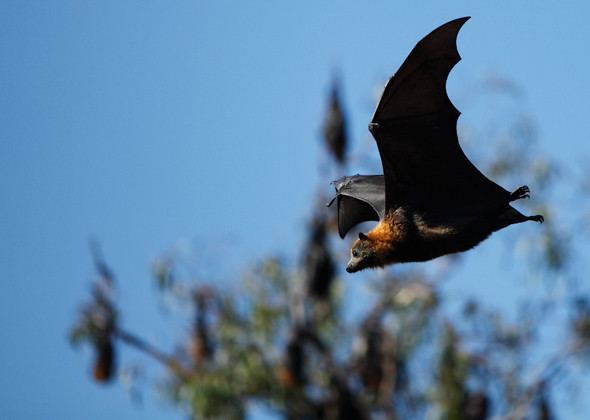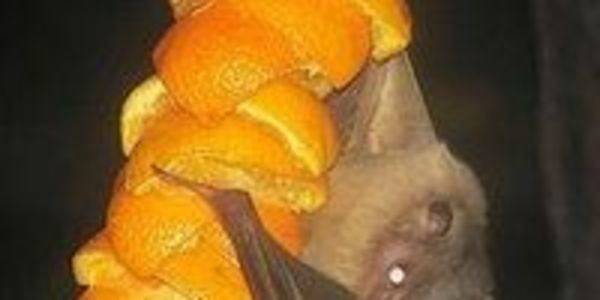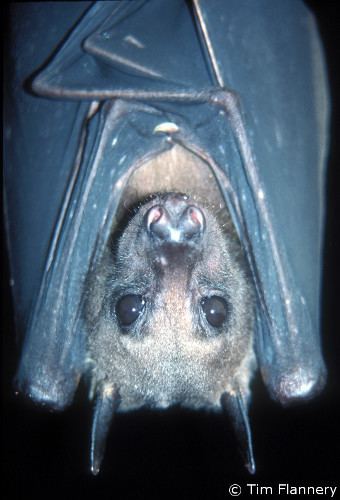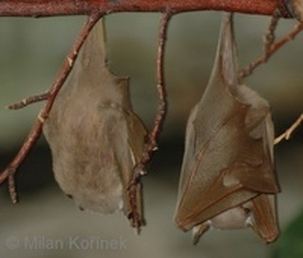Order Chiroptera Scientific name Aproteles bulmerae Rank Species | Phylum Chordata Family Pteropodidae Higher classification Aproteles | |
 | ||
Genus AprotelesMenzies, 1977 Similar Mindanao pygmy fruit bat, Bougainville monkey‑faced bat, Megabat, Guadalcanal monkey‑faced bat, Moluccan naked‑backed fruit bat | ||
Bulmer's fruit bat (Aproteles bulmerae) is a megabat endemic to New Guinea. It is listed as a critically endangered species due to habitat loss and hunting. It is the only member of the genus Aproteles.
Contents
- Profile
- IUCN Status
- History of distribution
- Threats and reasons for decline
- Biology and ecology
- References

Profile
One adult female Bulmer's fruit bat weighed 600 g (1.3 lb). Bulmer's fruit bat is a cave-dweller that occurs in mid-montane forests. Its altitudinal range is at least 1800 to 2400 m (5800–7900 ft). It is probably an obligate frugivore. It occurs in cave-dwelling colonies.

Etymology of the scientific name of Bulmer's fruit bat: genus name ("Aproteles") – "incomplete at the front" (Greek), a reference to the lack of lower incisors; species name ("bulmerae"), for Susan Bulmer, the archaeologist who excavated the site from which the original fossils were recovered.
IUCN Status
History of distribution

Bulmer's fruit bat was first described from 12,000-year-old fossils found in the central highlands in Chimbu Province, Papua New Guinea. It may have become extinct there about 9000 years ago. In 1975, it was discovered in the Hindenburg Wall area of Western Province, Papua New Guinea, in a cave known as Luplupwintem. At that time, local inhabitants described the bat as being abundant, perhaps numbering thousands of bats. However, two years later, the colony had been decimated, apparently by hunters who entered the cave with shotguns and store-bought ropes. During the 1980s, no bats were seen and it was feared that the species may have become extinct. However, by 1993 a colony of about 160 bats was known to be living in the same cave.

The species existed in the Telefomin region of Sandaun Province, Papua New Guinea, as recently as 1984. The only other populations reported from recent times are from the vicinity of Herowana in Eastern Highlands Province and from the vicinity of Crater Mountain in Chimbu Province, both in Papua New Guinea
Threats and reasons for decline
Hunting and human disturbance are the probable causes of its recent decline. The colony at Luplupwintem Cave had traditionally been protected by the native people of the area, but an inflow of outside cash in the mid-1970s led to the purchase of caving equipment and guns and to the decimation of the bat colony.
